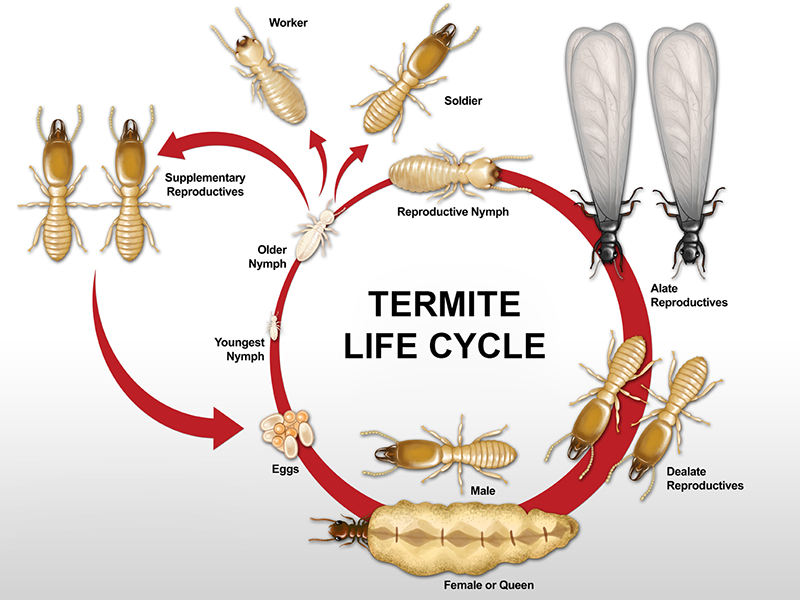
Information about termites
Don’t let the termites destroy your home
Termites are an ancient order of insects whose origins date back more than 100 million years to the Cretaceous period. Although they are commonly called ‘white ants’, the resemblance to ants is superficial and they are more closely related to cockroaches and in fact have been recently included into the cockroach order Blattodea. In nature termites assist in the recycling of organic matter and nutrients back to the soil. Termites avoid light and rarely come out into the open. Often termites are found within timbers where they leave a wafer thin layer to protect themselves from the outside environment. Sometimes they conceal themselves within mud-like tubes or galleries.
3 Categories of Termites
Subterranean Termites
Characteristics:
Subterranean termites are generally ground-dwelling or require contact with the soil or some constant source of moisture and are the main threat posed to timber in the built environment (timber-in-service).
Drywood Termite
Characteristics:
Drywood termites obtain water from the wood in which they live and have no contact with the soil, or with any other source of moisture. Unlike many other termite species, they do not need contact with the soil to survive. This termite species can tolerate dry conditions for long periods of time, since it receives all of the moisture it needs from the wood it consumes and the metabolism it uses to digest the wood.
Dampwood Termite
Characteristics:
Dampwood termites generally live in damp rotting logs or rot pockets in dead or living trees. They may infest buildings, utility poles and wood piles if these structures have wood-to-ground contact or areas moistened by water leaks – however, infestations in structures are rare.
Life Cycle

Termites undergo an incomplete metamorphosis, with three developmental stages:
- Egg
- Nymph
- Adult
The eggs hatch into nymphs (the first instar) that are fed by the workers, and these nymphs then moult several times, differentiating into worker, soldier or reproductive forms. Development into adult forms takes several months, depending on food, temperature and the size of the colony. Hormones are thought to control the numbers of each caste, with imbalances corrected by nymphs developing into whichever form is needed at the time.
Method of Treatment for Ants:
Rather than applying repellant type products we have devised a method of baiting that will insure the effective control of the infestation and target the nest as well.
At All Bugs our licensed technicians can assist you with a flexible, tailored solution to suit your individual needs we can prevent all pests from becoming a problem in your home or workplace. Please contact us to help you maintain an environment free of pests. Please call (07)3324 0111 to make an appointment.

